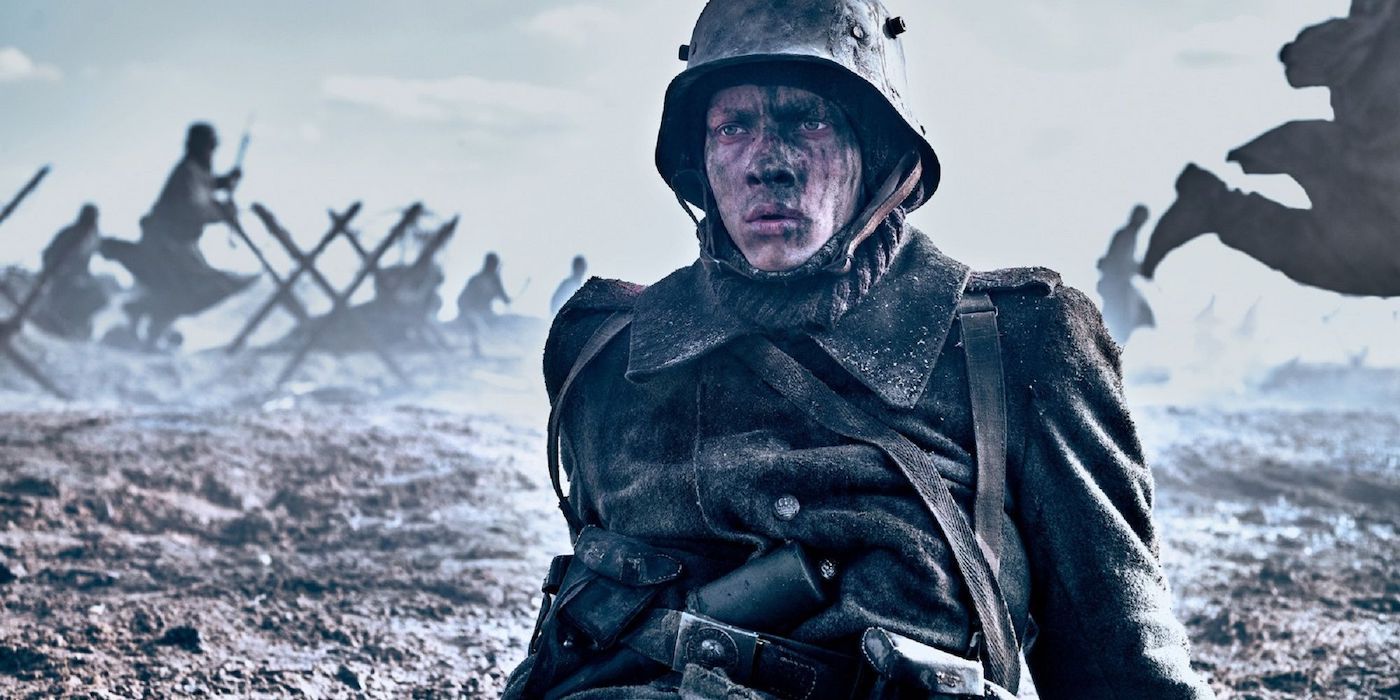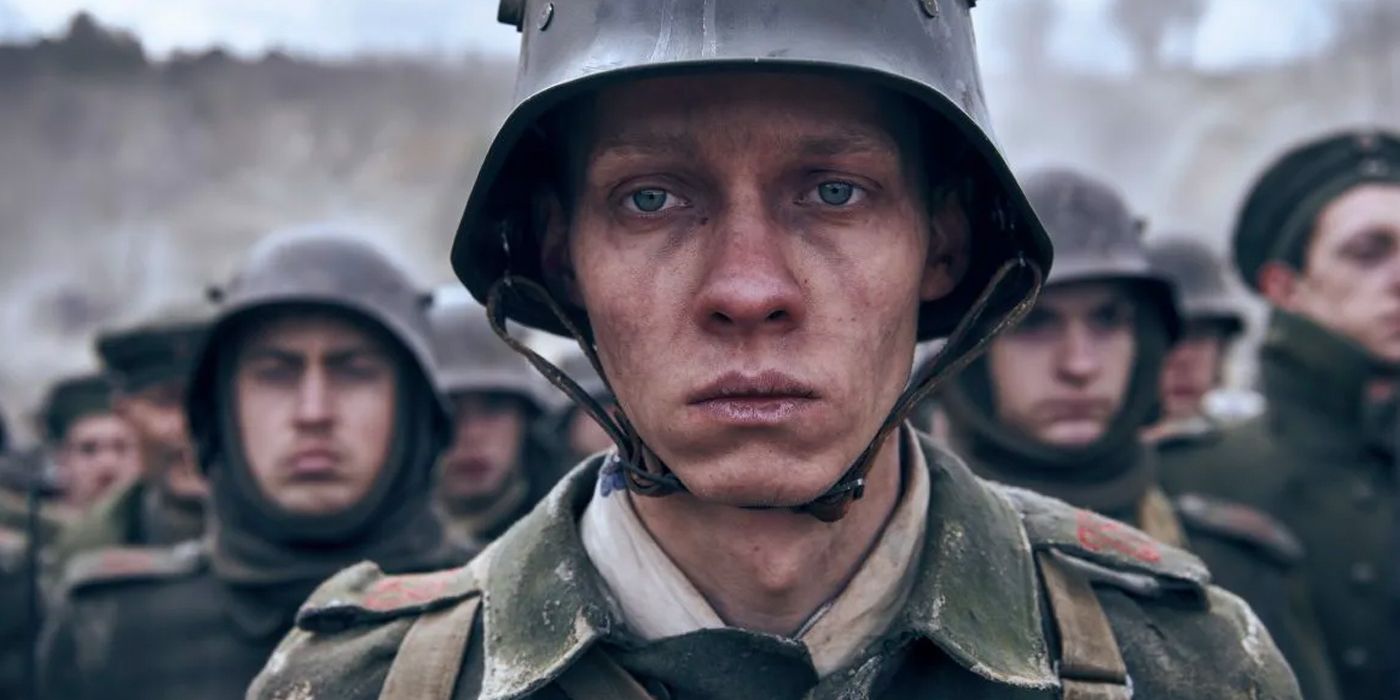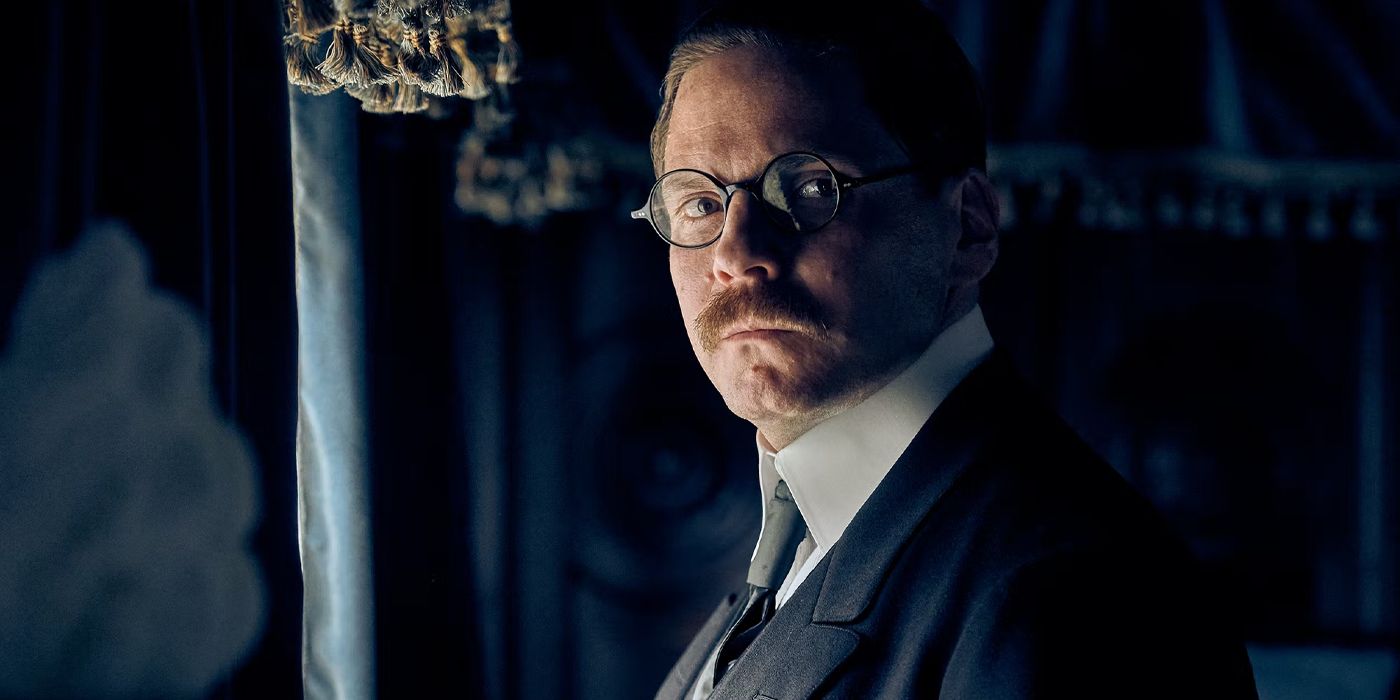The harrowing experience of World War I as seen in All Quiet on the Western Front is about as bleak and brutal of a depiction as any that have been put to screen. While there have been powerful previous adaptations of the enduring 1929 novel by Erich Maria Remarque that similarly showed how there is no heroism or glory to such fighting, there are none that have been quite like this. Alternating between the graphic violence of countless young men being killed one after the other and the cold isolation as the survivors sit around waiting for their turn to die, it is a film bursting with righteous indignation in a way none of the other adaptations have been. All the changes become necessary for this vision to be realized.
Those prior works, one in 1930 and a television film in 1979, reflected the cinematic techniques and context of the era while maintaining a similar commitment to capturing the terrifying truth of war. This latest interpretation from writer-director Edward Berger follows much of the same path as the previous stories though in a distinct manner that removes many narrative threads from the source material, while introducing several significant others. These additions make it a work that is disillusioned with the idea that mere awareness of the horrors to be found in war will leave much of an impact in preventing them. While abundantly cynical, the grim truth the film finds in this reimagined approach is refreshing in the quiet rage that is simmering underneath it.
Having been more than a century since the so-called “Great War," there is little sense that portrayals of the inhumanity of such conflict have even made a dent in the depravity that drives them. The film takes part in a cinematic dialogue with the legacy of Anti-War art and is far less enamored with the promise that visibility about the reality of what wars are actually like will somehow stop them from happening. The crisis it portrays stems not from a lack of information, as those looking down from their safe and toasty towers have plenty of intelligence about what is really going on, but one of nationalist-fueled cruelty.
The film still follows the central character from the novel Paul Bäumer (Felix Kammerer) which tosses him and his fellow young recruits almost immediately into the chaos of the front. Explosions and gunfire are unrelenting as we see the point where millions would die in fighting over the same stretch of only a few hundred yards for years. It strips away all the training and whatever sliver of order was felt in the opening of the novel to fully immerse itself in the chaos. Men are driven to madness while others sink deeper into themselves to survive. The only respite comes when Berger shows us the peace of nature, as if we are given a glimpse of what could be if such a war was not taking place. These moments of tranquility are brief, but their juxtaposition against just how infernal the violence is becomes pointed. The destruction is positioned as being unnatural and an affront against the surrounding world that becomes swallowed up.
Even when far removed from the front, the echoing of the fighting can never be fully escaped. The men here know what is happening all the time and at every moment know what awaits them when they are sent back into the depths of this Hell on Earth. Where the book and the past films positioned such a conflict as stemming from a lack of broader understanding about just how horrific it is to be there, this work takes it a step further. This begins in seeing how Paul does not get leave to go back to see his family. This is the most significant of changes from the source material and indicates a shift in what this film is interested in. Specifically, we see characters higher up in military and government leadership talking candidly about what is happening. All of these characters were absent from the novel and their being placed at key points throughout the film speaks volumes about what Berger is getting at. He gives us a glimpse of those who have the power to stop the violence and tragedy taking hold of the thousands dying every single day that they delay.
The sole character who seems to care about this is Daniel Brühl's Matthias Erzberger, also a new character that did exist in history, who is desperately trying to bring a halt to the fighting so that the unending death can be stopped. However, he is an outlier that serves to bring into greater focus just how dispassionate and cold nearly everyone else is around him. For all of how he tries to alter the trajectory of the conflict, his pleas for peace come far too late for millions that were sent to their graves by those fully aware that they would die. Paul is the face of this, but there are countless men just like him that got tossed aside like they were nothing. Even the uniform he wears came from someone who was killed just before him and discarded with his name tag.
The central figure of this is a General who gets to have luxurious meals while those beneath him die in the muck. It is a recurrent element of the film, where we see those in power getting to feast in security before cutting back to the men on the line waiting in silence before getting sent to slaughter. This is the rage that, while present in the novel when the men would discuss the conflict amongst themselves, reaches a breaking point here. While everyday people may not have known the full scope of the war that had been misrepresented by propaganda or had the power to stop it alone, those in power absolutely did. Every order to send the soldiers over the wall and into a charge that would end with them torn to pieces was a choice made by those who understood what it would result in. The depictions of this in the film, with one extended sequence at the halfway point proving to be particularly nightmarish, represent a reality that was well-known to those that made the call. They did so fully aware of what would happen and the losses that would be incurred. No justification can be made, no excuse is provided for these decisions as they sent men into a meat grinder over and over again. The "true face" of the war was one they had all been staring dead on and sending men to die in.
So what is the role of the Anti-War film or such art in general? Is it to shine a light on the truth and bring out into the open what actually happens, so we can understand not to do it again? This idealistic premise hinges on the idea that the only reason wars occur is because of a lack of knowledge about their human cost. What this most recent All Quiet on the Western Front does is expose how not only is this not true, but that most of those who have the power to throw away countless lives do so without even a second thought. The futility of trying to elicit compassion from those who have none to give will always end with the same outcomes. The film, as intentional in not falling into glorifying such a conflict as one could hope, also understands that this is all for naught. The ending for Paul, again expanded from the novel and vastly different from any prior adaptations, makes this explicit. It takes on a more pessimistic poetry that operates in conversation with its predecessors as each, no matter how unflinching, has not changed the fundamental ways that the gears of the war machine will always keep turning with the powerful operating the levers.



